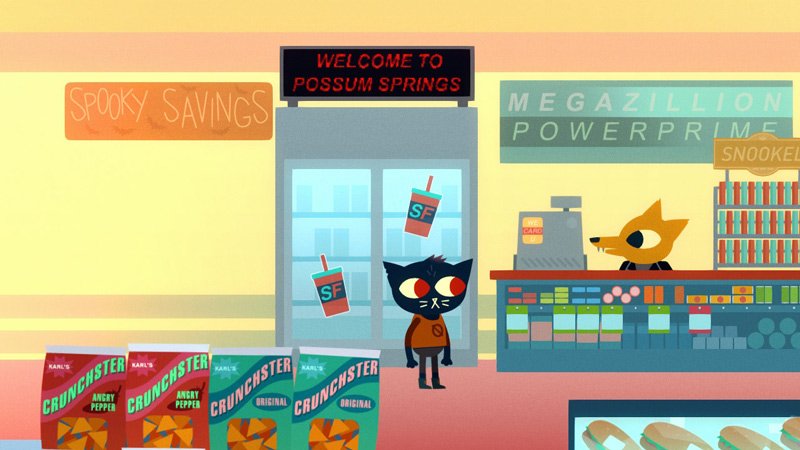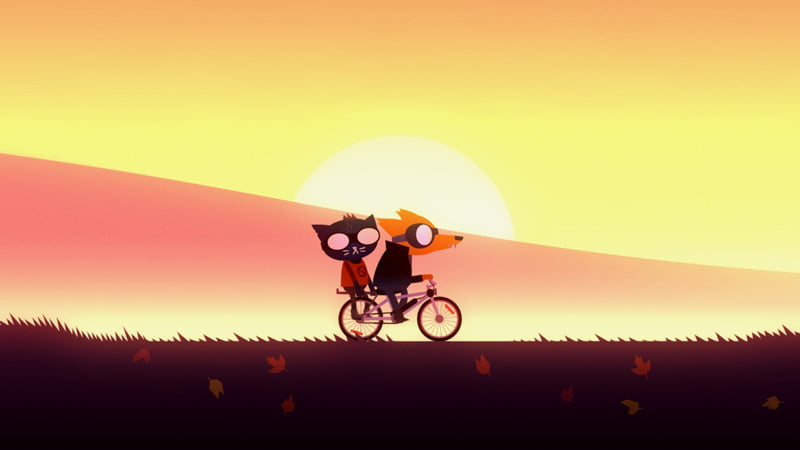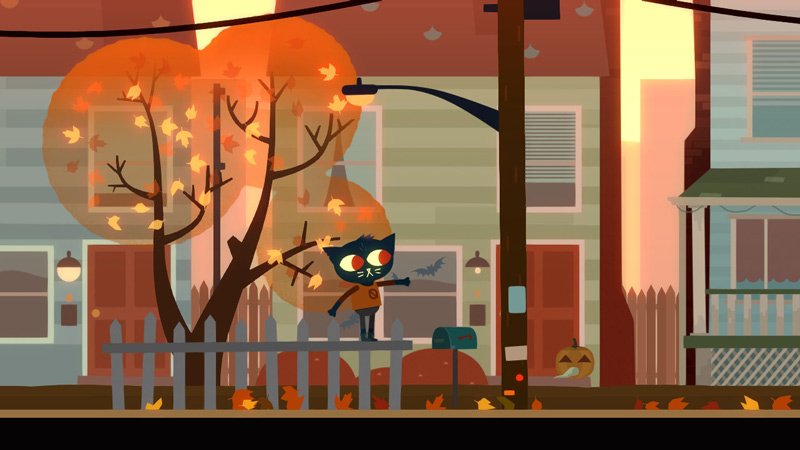Em Halberstadt speaks about how careful use of sound design helps to tell the story of Night in the Woods.
Infinite Fall’s Night in the Woods is a game where visuals, music, and gameplay all come together in the service of story. Its sound design may not have drawn as much attention as Alec Holowka’s score, but its audio effects are just as important in giving texture to the game’s world, and its characters.
In her talk at GDC 18, Em Halberstadt, sound designer at A Shell in the Pit, spoke about the audio techniques she used in the game.
“This is story about a place and a time, it’s told through setting, atmosphere, and characters,” says Halberstadt. “And my goal with the sound was to reflect this, and bring you closer into the setting. To make you feel like you are Mae, feeling as she would feel in this place.”
Halberstadt says that every single one of Night in the Woods’ 5,090 sound effects make a contribution to the story. Using the game’s opening scene as an example, she explains how the the mixture of ambient sounds, and silence, helps to create a tone and make the scene feel alive.
“Even without looking at the dialogue, things feel a little bit ridiculous and a little bit off,” she says.
“Being alive in terms of sounds, means chaos. It means that if there is a repetitive action, like a conversation, there will be a corresponding set of variable sounds that trigger randomly. Being alive also means movement and rhythm in everything. It means that sounds come from both known, and unknown, sources.”

Mood and feeling
Every sound inside every scene helps to create a mood, and question how the player is feeling by being there. One effect used throughout Night in the Woods to create this feeling is the sound of the wind, an effect Halberstadt created using her own voice.
“I made most of the wind sounds by blowing into the microphone, cutting it into short segments that fade in and out, and turning it into a scatter ambience, which is a sound triggered at random time intervals, as well as at a random position in space.”
Even the most humdrum and domestic effects can help.
“I wanted to give Mae’s home a comforting sense of life,” Halberstadt explains. “And so I decided this meant waking up, and hearing your mum bustling around downstairs.”
During production Alec Holowka pointed out that the effect didn’t make complete sense, as when Mae goes down stairs her mum is sat at table reading a newspaper. Halberstadt solved this incongruity with an off-screen sound effect.
“Instead of taking it out, I decided to create a little narrative each morning, and have Mae’s mum finish up and sit down, right as you come down the stairs. This is an example of a sound coming from an unknown source, and it also has the special purpose of letting your know that she’s there to talk to if you want”
Another example can be found later in the game when Gregg grabs a USB stick from his desk. The player doesn’t see the action, but they hear the rustle of paper as he looks for it; this simple sound cue negating the need for any animation.
“Off-screen sound can really help if you don’t have enough time to animate everything,” says Halberstadt. “It doesn’t have to be something that was left out, it can be a choice. If you’re a writer you can plan for it, and if you’re a sound designer you can look carefully for those moments where you can add continuing movement and fluidity, and connect little narrative threads.”
Possum Springs
The town of Possum Springs has received much praise for its bustling sense of life. Sound plays an important role in this, with a wide array ambient effects, and randomised NPC chatter. Halberstadt explains that as she never knew how intimate players would get with any particular space, she wanted to avoid looping sounds.
“The main town is filled with randomly triggering sounds,” says Halberstadt. “Each different time interval was a deliberate choice that said something. This is a silly detail, but the pigeons have a 44% chance of pecking a seed, and a lower chance of breaking it open. It seems minute, but adding probability helps makes the world sounds less repetitive.”
The sound also adapts to the player’s location. For example, if you climb higher in Possum Springs, the wind effect builds up, and the music loses its low frequencies and becomes quieter.
“Once you get to the top you can hear that lonely wind, and it creates a moment for me. It feels different to standing on a street, like you’ve accomplished something… And you can listen to the pigeons pecking seeds,” Halberstadt says.
Originally the main characters of Night in the Woods were going to exhibit a wide range of vocal sounds, murmurs and groans.
“The original plan was to trigger a vocalisation of a single emotion for each different speech bubble,” says Halberstadt.
This was scaled back for creative reasons, and after seeing how streamers liked to provide their own voices when reading out the game’s dialogue. In the final game, it’s Mae’s jumping vocals that are most evident.
For the game’s dream sequences Halberstadt used modulated breathing sounds, and additional wind scatters.
“And to get you more into Mae’s head doing he scary scenes, or when you’re sleeping,” says Halberstadt. “I recorded some shallow breathing using binaural microphones.”
“I also took the signature sounds from the dreams, and placed them at moments in the story in the real world that meant something. I imagined that it’s coming from Mae’s head, as if you’re hearing what she’s hearing,” Halberstadt says. “I didn’t do any of this imagining that you could think about it consciously, but I think that just because something isn’t consciously noticed, it doesn’t mean it’s not working as a functional part of the story.”
Halberstadt concludes her talk by returning to the theme of sound being an emotion, working to create intangible feelings in the player.
“We notice the feelings it gives us even if we don’t pinpoint the source,” she says. ”One of my least favourite expressions in the sound design industry is that if you’ve done a good job, people won’t notice. I would argue that we shouldn’t seek to go unnoticed, but instead provoke people into listening by make them feel shit.”
We assume Halberstadt means that in a positive sense.
Night in the Woods is available now on Windows, Mac, Linux, PlayStation 4, Xbox One, and Nintendo Switch.








Em does a wonderful job in her conclusion distinguishing hearing and listening & sound being an emotion, working to create intangible feelings in the player. As highlighted in The Night in the Wood, listening is an active process involving the ability to take in, process and respond to the dynamic flow of information as it’s imbued and embodied in the UX.
“We notice the feelings it gives us even if we don’t pinpoint the source,” she says. ”One of my least favourite expressions in the sound design industry. . . Doing a good job, people won’t notice. I would argue that we should shouldn’t seek to go unnoticed, but instead provoke people into listening by make them feel shit.